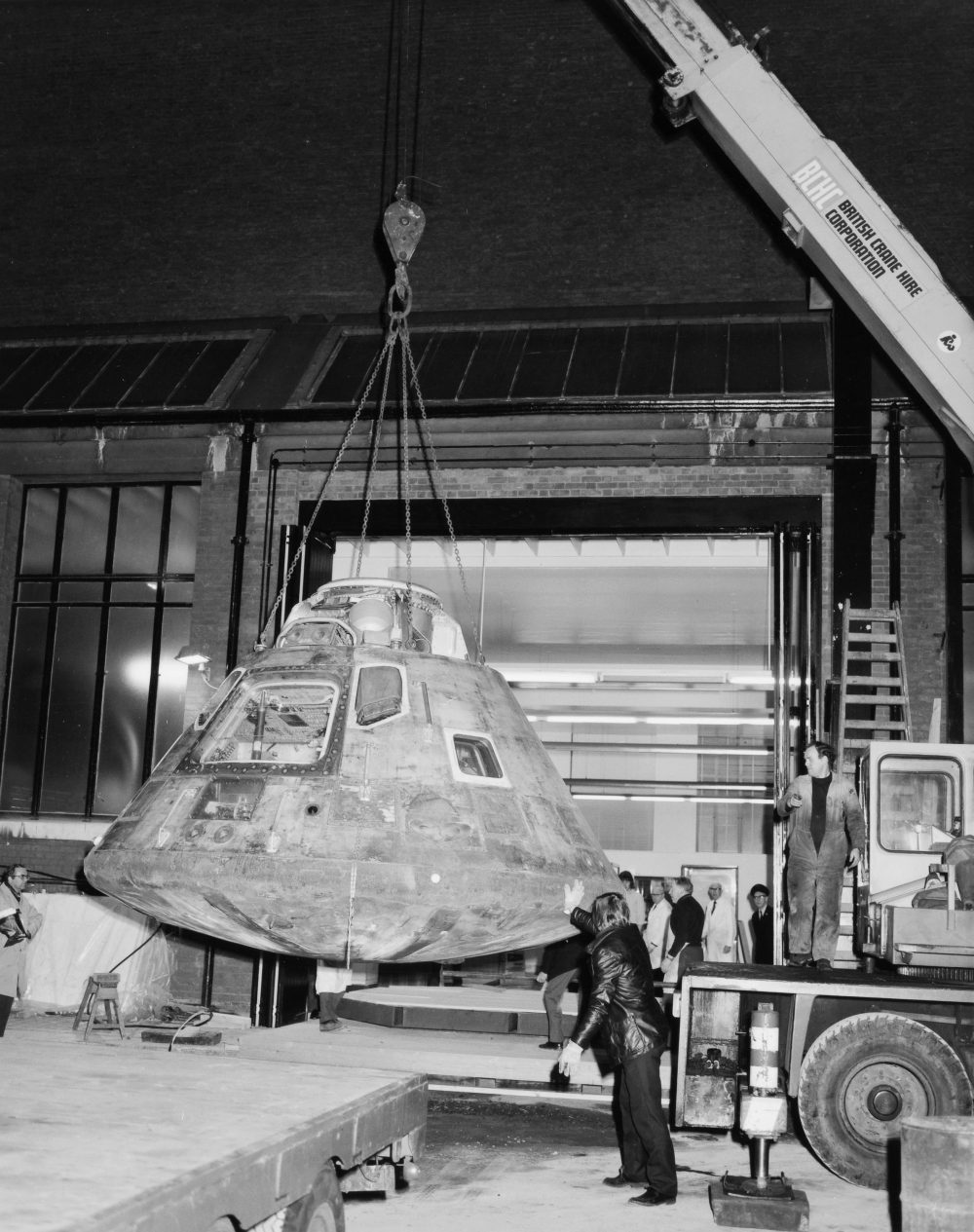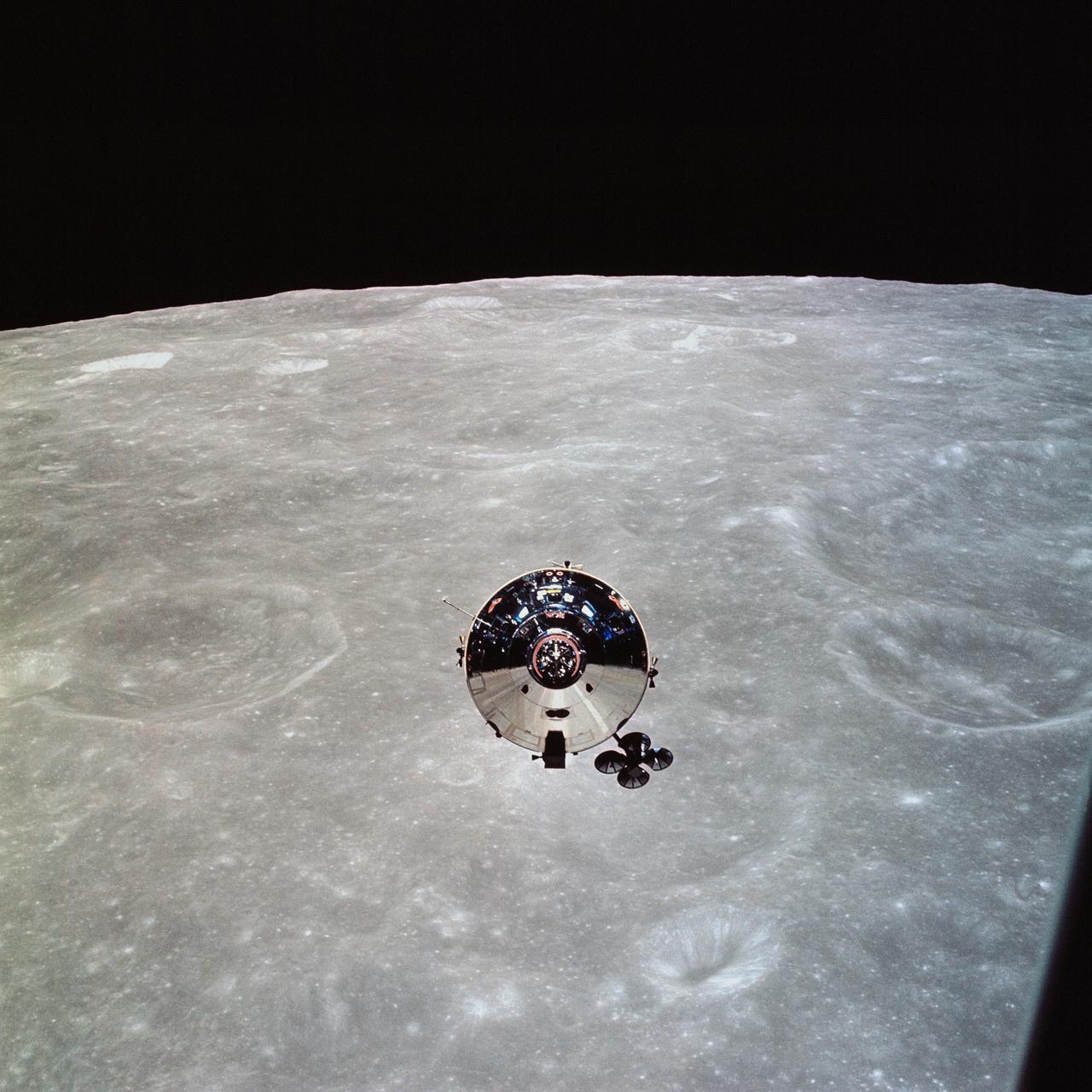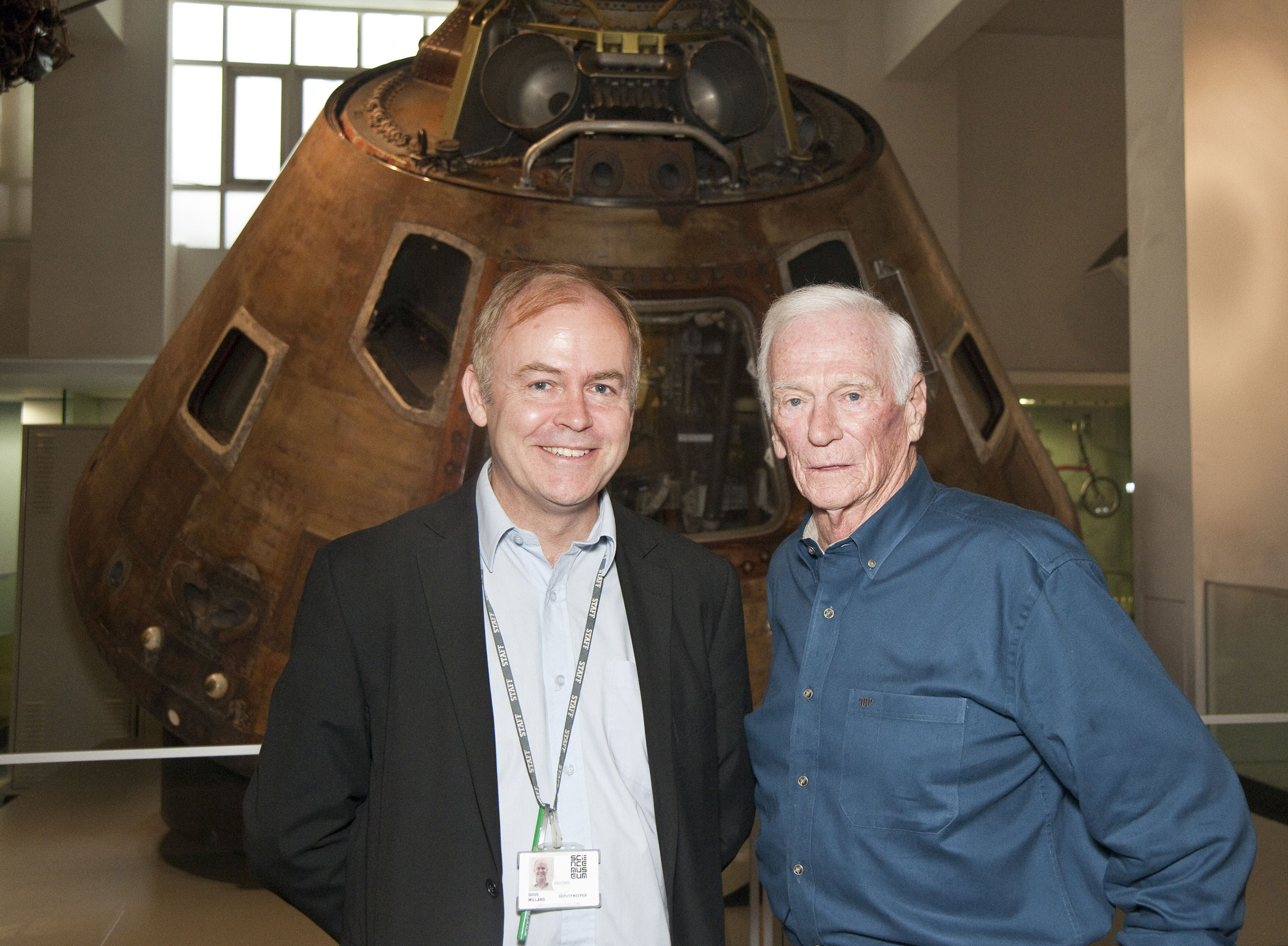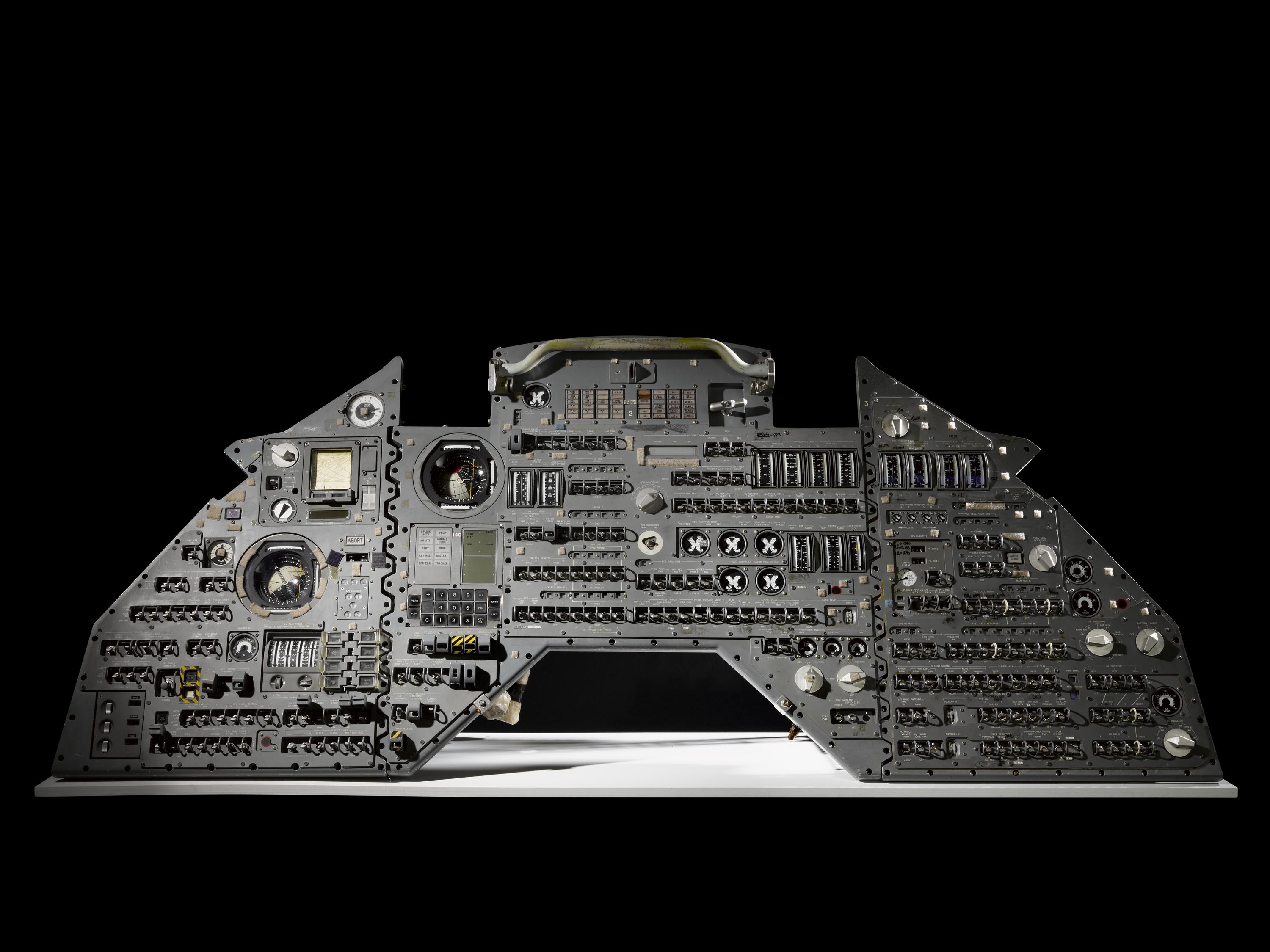It arrived slowly. On a chilly January day in 1976 a low loader lorry backed up outside the gallery’s large doors. Technicians and curators scurried about and readied themselves with tools, rules, spirit levels and a good quantity of stout wooden panels.

The object on the lorry was winched carefully into the air and swung around into the open doorway. A large and wheeled steel frame was pushed under the object and the technicians set about measuring its base and cutting the wood carefully into a series of sizes. These were bolted into place on the frame forming what looked like a rather large and curiously curved toast rack. The top side of each rib was covered with cushioning.

The suspended object was tilted and lowered very carefully onto the ribbing, its contoured base nestling snugly on the padded supports. And then, slowly but surely, all was pushed into the waiting gallery.
The Apollo 10 command module that just seven years before had taken three astronauts around the Moon had touched down safely at the Science Museum in London.

Apollo 10 was the one and only all-up test of the entire spacecraft at the Moon. Tom Stafford, Gene Cernan and John Young did all but land, leaving that for Neil Armstrong and Buzz Aldrin two months later in Apollo 11.
The lunar trial went well. Stafford and Cernan took the lunar module down to just 15 kilometres above the lunar surface. John Young remained in the command module, trimming and checking his orbit ready for the return of his two colleagues.

There were some scary moments when the lunar module had started to roll during its descent but Stafford and Cernan dealt with it and performed all the necessary procedures that would be needed on Apollo 11.
Before arriving at the Science Museum, the spacecraft – call sign Charlie Brown and owned by the Smithsonian Institution’s National Air and Space Museum – had toured Europe and the U.K. Surprisingly, there are few readily accessible records of which locations it was displayed at. France, the Netherlands, Hull in England – even the Soviet Union, have all been mentioned but a definitive historical itinerary has yet to be confirmed.

What we do know, though, is that Charlie Brown – for almost fifty years – has been travelling substantially more slowly on Earth than when it returned from the Moon.
Like all the Apollo command modules that had visited Earth’s natural satellite, Apollo 10 came back at about 39,000 plus km per hour when plunging back into Earth’s atmosphere. Charlie Brown, though, holds the record: 39,897.25 km per hour. The fastest humans have ever travelled.

And today we also celebrate the return of the Soyuz TMA-19M capsule after its national tour where it was seen by 1.3 million visitors. The spacecraft which took British ESA Astronaut Tim Peake to the International Space Station and back has now landed in the Science Museum’s Exploring Space Gallery where it will be on permanent display.

Not only that, but the original command module simulator console for the Apollo missions; a key object in NASA’s contribution to the space race, and one which has never been seen in the UK before, is now on display in the Making the Modern World Gallery. This console was used by all Apollo astronauts to train for their missions.
This blog was originally posted to celebrate the Science Museum’s Summer of Space festival in 2019.
